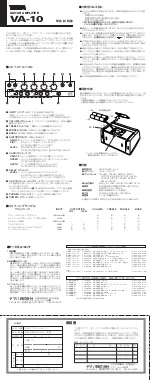
136
Rh
ythm P
attern Pr
ogr
am and Rh
ythm Sequence Pr
ogr
am
9
Pressing the Data Control button corresponding to CHANGE VOICE
opens the following message on the display.
Select the voice you want to use by pressing the Data Control buttons
corresponding to .
The available voices are as follows:
Acc.Piano
Acc.EP (Electric Piano)
Acc.FolkGt (Acoustic Guitar)
Acc.JazzGt (Jazz Guitar)
Acc.Banjo
Acc.ElecGt (Electric Guitar)
Acc.MuteGt (Muted Guitar)
Acc.DistGt (Distortion Guitar)
Acc.Brass
Acc.Horn
Acc.Sax (Saxophone)
Acc.Clari (Clarinet)
Acc.JzOrg (Jazz Organ)
Acc.Accord (Accordion)
Acc.Woody
Acc.Metal
* Acc.: Accompaniment
4
Step Forward and Step Reverse Controls
Each press of the corresponding Data Control buttons advances or
reverses the rhythm clock by one step. The size of a single step is
determined by the Quantize value, set in the Beat/Quantize page.
5
ACCENT
Records the selected voice and determines its volume or Accent level.
4
Select a voice used for the rhythmic pattern.
5
(If necessary) Choose the BEAT/QUANTIZE page and select the
desired quantize value.
6
Returns to the Lower Rhythmic (ACC.) page and press the
appropriate Accent button to actually enter the notes.
7
Repeat the above #5 and #6 steps to complete your own rhythmic
pattern.
NOTE:
When the user rhythm contains the
lower rhythmic pattern data, the ACC.
page is always engaged with the Lower
Rhythmic function. If you want to use a
preset accompaniment for your rhythm,
you need to erase the lower rhythmic
pattern data using the Clear operation.
NOTE:
You can audition the rhythmic pattern
you entered by starting the rhythm. In
this case the accompaniment volume
ignores the value set on the Rhythm
Condition display and will be at the
maximum value.
Summary of Contents for Electone EL-500
Page 1: ......
















































